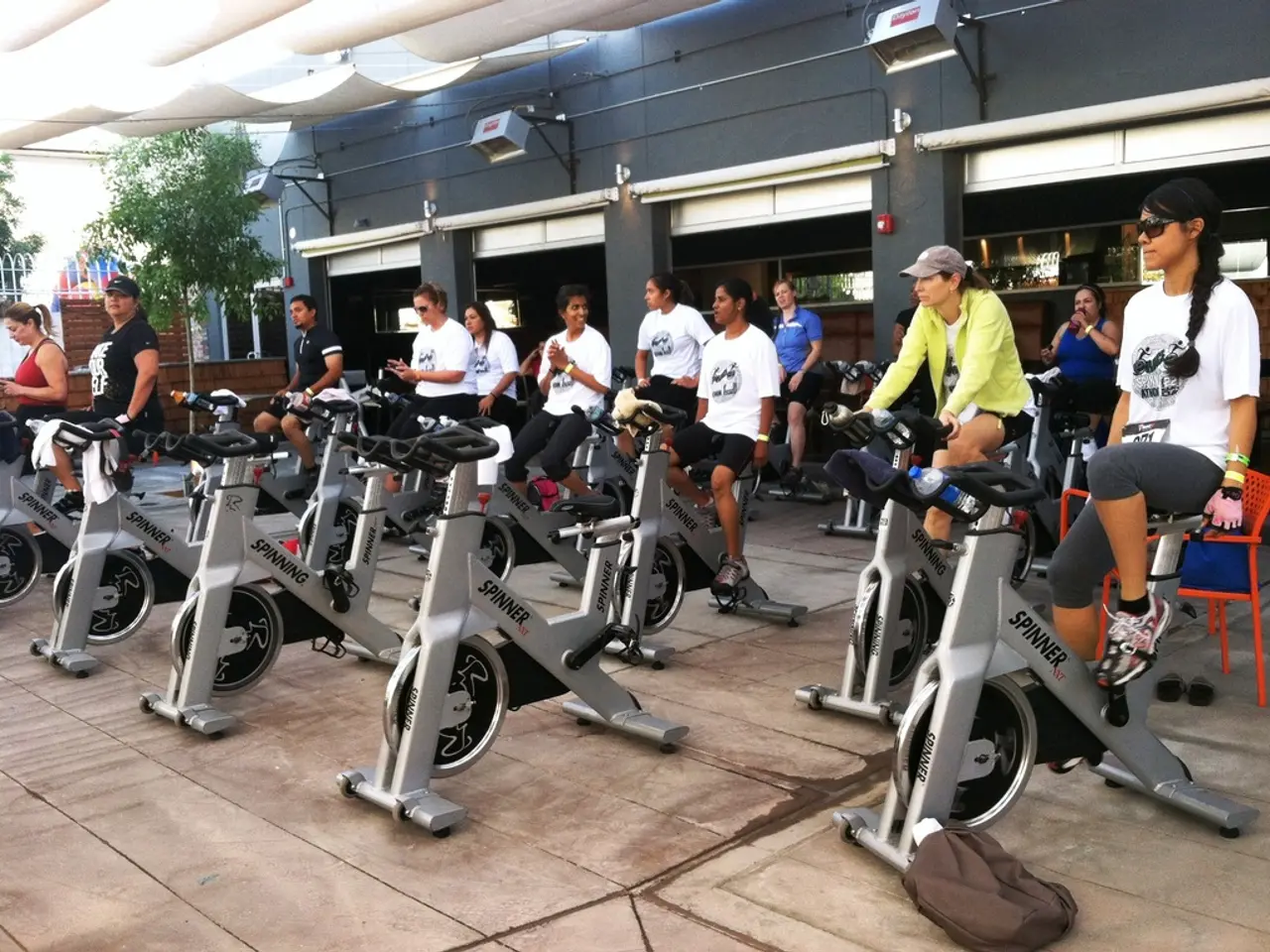Do you frequently find yourself seated for extended periods?
In a report titled "How Healthy Does Germany Live?" by the German Health Insurance (DKV), it is revealed that adults spend an average of ten hours a day sitting at work [1]. This sedentary lifestyle can have detrimental effects on health, leading to the need for more physical activity in our daily lives.
The World Health Organization (WHO) recommends that adults engage in at least 150 minutes of moderate-intensity physical activity per week [2]. Examples of such activities include brisk walking or relaxed cycling [3]. However, to truly enhance our well-being, it's essential to incorporate more movement into our daily routines beyond these recommendations.
One approach is to spread physical activity throughout the day and make it a consistent habit [4]. This can be achieved by incorporating short workouts, or what is often referred to as 'exercise snacking', into our daily schedule [4]. Doing several 5-minute bursts of strength, flexibility, or aerobic exercises is more manageable than one long session [4].
Walking more frequently and briskly is another practical idea. Aiming for several brisk walks a day at a pace of about 100 steps per minute can count as moderate intensity [4]. Active work breaks, such as using lunch breaks or meetings to walk or stand instead of sitting, can also be beneficial [4].
For those seeking variety, trying new activities can be a great way to stick with it in the long run. This could mean joining local fitness classes like yoga, dance, or boxing, using gym opportunities, or exploring low-impact exercises [4]. Balance and strength exercises, particularly for older adults, should also be included more than twice weekly [4].
Reducing sedentary time is crucial, as prolonged sitting increases health risks even for otherwise active people [5]. Standing up and moving often during sedentary tasks can help mitigate this risk.
Active commuting options, such as parking further away or getting off public transport stops earlier, can also increase daily activity [4]. Imagining how good you'll feel after a short run or walk can help stay motivated, while connecting phone calls with a few steps of movement can motivate walks [6].
Taking the stairs instead of the elevator or escalator can strengthen muscles in the thighs, calves, and buttocks [7]. Combining an exciting audiobook with a walk in the park or around the block can be a motivating tip [8]. Packing the sports bag the night before, pumping up the bike tires, or rolling out the yoga mat in the living room can remove obstacles to regular exercise [9].
The key is to make physical activity a part of your daily life, matched to your abilities and preferences while gradually increasing duration and intensity [4]. This approach improves cardiovascular health, muscle tone, mental clarity, and overall well-being, moving beyond just meeting baseline guidelines to enhancing daily life vitality [1][2]. The WHO states that every bit of movement is better than none [2].
References:
[1] DKV (2020). How Healthy Does Germany Live? [Online]. Available: https://www.dkv.de/de/aktuelles/aktuelles-themen/gesundheitsbericht-2020/
[2] World Health Organization (2020). Global Recommendations on Physical Activity for Health [Online]. Available: https://www.who.int/publications/i/item/9789240034080
[3] World Health Organization (2020). Physical activity [Online]. Available: https://www.who.int/news-room/fact-sheets/detail/physical-activity
[4] American Heart Association (2020). How to Incorporate More Physical Activity Into Your Daily Life [Online]. Available: https://www.heart.org/en/healthy-living/fitness/physical-activity/how-to-incorporate-more-physical-activity-into-your-daily-life
[5] Mayo Clinic (2019). Sedentary behavior and your health [Online]. Available: https://www.mayoclinic.org/healthy-lifestyle/adult-health/in-depth/sedentary-behavior/art-20045777
[6] American Psychological Association (2020). Tips for Staying Motivated to Exercise [Online]. Available: https://www.apa.org/topics/exercise/tips-staying-motivated
[7] Harvard Health Publishing (2019). The health benefits of climbing stairs [Online]. Available: https://www.health.harvard.edu/staying-healthy/the-health-benefits-of-climbing-stairs
[8] American Council on Exercise (2020). 3 Ways to Make Your Walking Workout More Exciting [Online]. Available: https://www.acefitness.org/education-and-resources/professional/expert-articles/3600/3-ways-to-make-your-walking-workout-more-exciting/
[9] American Heart Association (2020). Tips for Making Exercise a Habit [Online]. Available: https://www.heart.org/en/healthy-living/fitness/physical-activity/tips-for-making-exercise-a-habit
- The World Health Organization suggests that beyond the baseline physical activity guidelines, it's vital to integrate more movement into our daily routines for enhanced well-being.
- To fulfill this, implementing the strategy of 'exercise snacking' with short workouts throughout the day could be a practical approach to incorporating physical activity more consistently.
- A well-rounded routine should also include activities from various categories such as flexibility, strength, and aerobic exercises alongside walking, nutrition, and balanced diets to boost health and wellness in the workplace and beyond.




